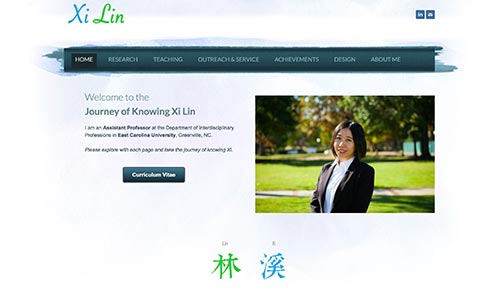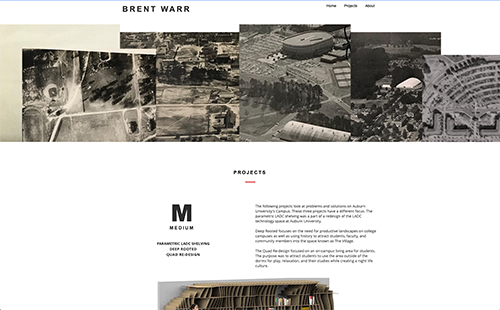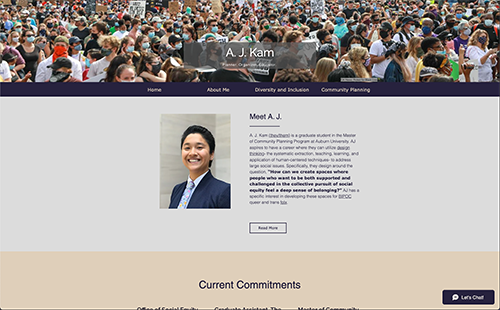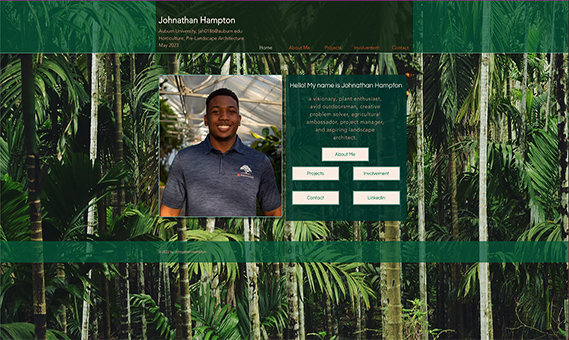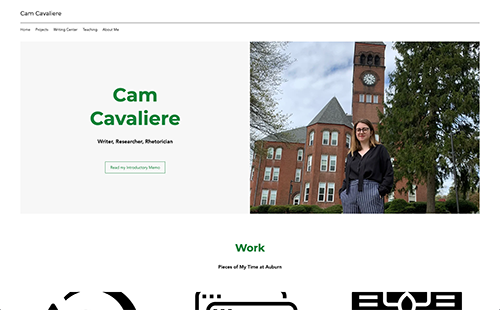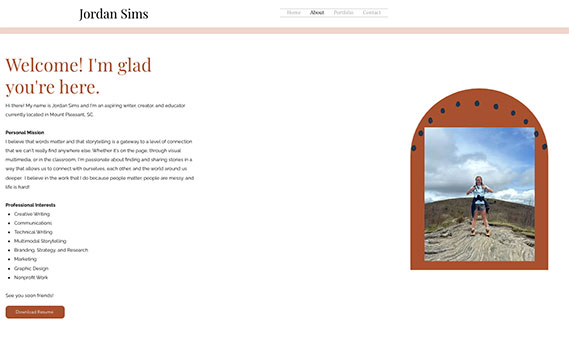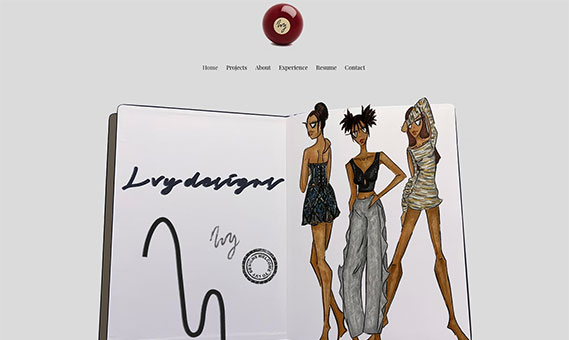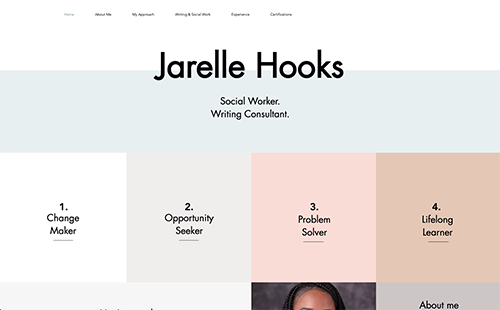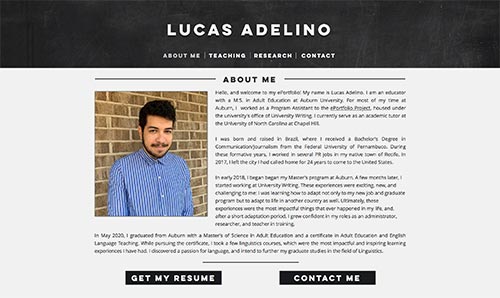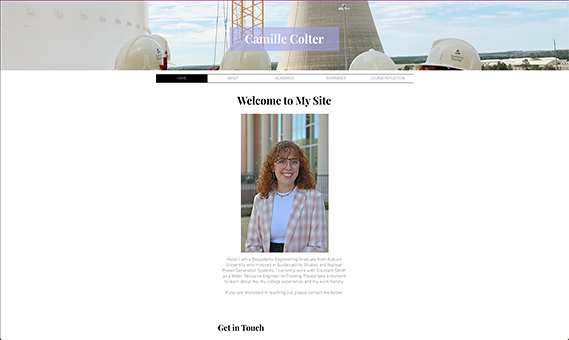All entries
Taking on a creative work can be daunting. Whether you are gearing up for NaNoWriMo or looking for year-round support, these resources will help you work through the writing process for endeavors such as novels, novellas, and short stories. Specifically, these documents are useful for brainstorming, drafting, and organizing ideas for premise, plot, point of view, characters, worldbuilding, and dialogue. You will also learn scene blocking techniques and tips for finishing and revising your first draft.
Materials designed by Autumn Frederick and Heesun Yoon
This worksheet introduces you to premise, provides a breakdown of premise components, and helps you draft your own premise
This worksheet reviews two types of story structure: the Three Act Structure and Freytag’s Pyramid. Space is provided to help you map your story out in both structures to decide which best fits your writing style
This worksheet discusses five points of view found in creative writing, notes tips for helping writers select a point of view, provides resources for writing and reading for diversity, lists questions to consider for character creation, and provides fillable character profiles
This worksheet provides planning resources, an overview and list of decisions, and activity for delving into worldbuilding
This handout breaks down tips for improving your descriptive writing and provides examples and explanations for each suggestion
This brief handout provides an explanation of what dialogue is and how it is formatted and provides space for practice
This brief worksheet defines scene blocking and provides an activity for practice
This brief handout lists good habits for finishing your project and outlines tips and resources to aid you in revising your first draft
Academic writing is a unique type of writing and can vary across disciplines. Use these materials to better understand the elements of academic writing, such as voice, disciplinary writing, and college-level writing. Reading academic sources is an important part of learning how to write in your discipline. For tips on how to engage with reading these sources, see our section on Reading Difficult Materials
Materials designed by Colby Axelberd, Christopher Basgier, Katharine Brown, Amy Cicchino, Clare Hancock, Megan Haskins, James Truman, and Livi Welch
This worksheet is designed to help incoming first-year college students learn a bit about writing at the college level. There are also scenarios where students can consider what they would do in difficult writing situations
The handout breaks down some implicit expectations related to academic voice, such as when and how to use first-person writing, jargon, style, and sentence variation
This worksheet invites you to revise a piece of writing by paying attention to its voice within a sample paragraph
This brief handout provides some examples of academic voice from various disciplines
This worksheet provides excerpts from disciplinary writing and asks participants to guess the disciplinary context for the writing. By doing this, we hope you will begin to see how different disciplines structure and style their writing
This worksheet invites writers to consider the rhetorical situation of a genre and plan their writing within that genre
This worksheet helps you apply reading like a writer to your work by inviting you to examine written artifacts from a writerly perspective by paying attention to features like structure, key terms, signposting, and verb use
This worksheet is meant to help graduate students approach writing their first manuscript by making explicit options for manuscript section organization and looking at examples
This handout invites readers to compare an excerpt from a dissertation to an excerpt of the same material, rewritten for nonspecialist or "general" audiences
This handout invites extension professionals to reflect on the kinds of academic and non-academic genres the produce in their positions.
This worksheet invites writers to plan a piece of writing for a general audience by leading them through the elements of the rhetorical situation
This worksheet guides you through developing an argument and countering opposing arguments with a focus on claims, reasoning, and impact
This resource provides helpful information for students writing in a foreign language. Though writing in another language comes with its obstacles, it also yields many benefits that can lead to deeper learning and an elevated relationship with language
As you write and communicate with others, it is important that you consider accessibility, or the ability for diverse audiences to engage with your writing. The commitment to accessible and inclusive practice is ongoing and demands recursive critical reflection, education, and feedback, but we hope these resources get you beginning to think about diverse readers and audiences for your work.
Materials designed by Colby Axelberd, Christopher Basgier, Katharine Brown, Amy Cicchino, and Layli Miron.
This guide articulates University Writing's practices for accessibility and inclusivity. We use this guide for internal training within our program
-
Accessibility and Inclusivity Guide from University Writing Word Document
-
Accessibility and Inclusivity Guide from University Writing PDF
This handout guides discussion facilitators in enacting inclusive practices like inclusive introductions, rapport building, and strategies for encouraging conversation
This handout helps mentors learn how to build mentor-mentee relationships that take account of meaningful differences across race, ethnicity, socioeconomic status, gender, sexual identity, and academic major
This handout helps writers create accessible Word and PDF documents with an emphasis on visibility, audibility, and mobility
This checklist helps you evaluate the accessibility of a specific form of digital writing, ePortfolio websites, by reviewing the accessibility of your content and digital design.
This document outlines ways of managing nonverbal mechanics, including the upper and lower body, with attention to accessibility for speakers with disabilities
Artificial Intelligence (AI) applications like ChatGPT offer new opportunities and challenges for teachers and for students. The documents in this section offer guidance on how to respond to AI in ways that center thinking and communication.
Materials designed by Christopher Basgier and Muhammad Umer
This document represents University Writing’s most up-to-date guidelines for faculty response to AI. It is organized according to four modes of response: prohibition, permission, pedagogy, and engagement
This document represents University Writing's most up-to-date information and guidance for students on AI. It defines artificial intelligence, describes large language models like ChatGPT, and guides students in deciding when and how to use AI in their courses
This handout suggests ways in which writers can practice critical thinking while using generative artificial intelligence
This worksheet invites users to plan the elements of a successful prompt for generative artificial intelligence
This document is a sample conversation with ChatGPT that illustrates how an iterative prompting process can be used to create lesson plans
This handout helps students plan literature reviews by using selected examples of AI tools
In order to effectively share our research findings with others, we must be able to deliver presentations clearly and impactfully. These resources include tips about oral and visual communication as well as visual design principles that will help engage and inform your audience.
Materials designed by Colby Axelberd, Christopher Basgier, Katharine H. Brown, Amy Cicchino, Carly Cummings, Megan Haskins, Layli Miron, Annie Small, Heather Stuart, and Parker Wade
This brief handout outlines elements of oral communication
Once you have a draft of your oral presentation, this peer review worksheet can help you self-assess or get feedback
This handout will help you decide the best way to visually represent your data
This handout introduces you to four principles for visual design: contrast, repetition, alignment, and proximity
This worksheet is meant to help you put together a presentation. It has been designed for students in aerospace engineering
-
Designing Presentations in Aerospace Engineering Worksheet Word Document
-
Designing Presentations in Aerospace Engineering Worksheet PDF
This handout will introduce you to scientific posters and analyze example posters
This worksheet will help you self-assess a draft of your scientific poster or gather feedback from a peer
This worksheet is designed to help you articulate how you “see” visible materials and what you expect students to do with visible materials in your courses
This document outlines ways of managing nonverbal mechanics, including the upper and lower body, with attention to accessibility for speakers with disabilities
Whether they’re high stakes or low stakes, writing assignments are more effective when faculty articulate clear expectations, explain necessary steps, detail the rhetorical situation (i.e., audience, purpose, and genre), and name criteria for evaluation. Such assignments set students up for success by leaving the guesswork out of assignment basics so they can focus on more substantive matters such as analysis, evidence, and working with sources. Use the resources below to design writing assignments with these features in mind. After you’ve designed your writing assignment, check out our section on scaffolding assignments and writing-to-learn assignments
Materials designed by Christopher Basgier, Amy Cicchino, and Amber Simpson
Faculty who want to integrate writing into their courses can use high stakes assignments, low stakes assignments, or some combination of each. This handout defines each kind of writing and explains how you might integrate it into your course
This handout introduces you to effective writing assignment design using principles from transparent assignment design and The Meaningful Writing Project
Once you have a draft of your assignment sheet, you can use this self-assessment worksheet to reflect on how well your assignment is achieving the principles in the handout above
Once you have a draft of your assignment sheet, you can work with a colleague in your department or institution and use this peer assignment worksheet to get feedback on how well your assignment is achieving the principles in the handout above
Refresh your writing assignment by asking students to address a new audience, purpose, genre, or medium of communication as they explain their knowledge of content. This handout will explain what it means to create a new rhetorical situation for your assignment
-
Revising Assignments for New Rhetorical Situations Handout Word Document
-
Revising Assignments for New Rhetorical Situations Handout PDF
This worksheet will help you compare the existing and redesigned assignment across elements of the rhetorical situation, like audience, purpose, genre, language, organization, and content. While not every rhetorical element needs to change in your redesign process, you should reflect on how changes need to influence scaffolding activities and evaluation criteria
-
Revising Assignments for New Rhetorical Situation Worksheet Word Document
-
Revising Assignments for New Rhetorical Situation Worksheet PDF
This handout will help you think through the process of converting an online multiple choice test into a writing assignment
-
Ditching Multiple Choice: Reasons to Design Writing-Base Assessments Handout Word Document
-
Ditching Multiple Choice: Reasons to Design Writing-Base Assessments Handout PDF
This handout provides an overview of different kinds of rubrics you might want to use, as well as ways of describing performance levels. It also includes advice for developing a successful rubric
Emails can be tricky to write because they are a professional form of communication that demand concise, careful wording. The resources below will help you learn about emails, gain tips for writing effective professional emails, and avoid common email pitfalls.
Materials designed by Amy Cicchino, Tricia Dozier, Megan Haskins, Layli Miron, Annie Small, and Heather Stuart
This brief handout offers tips for considering your audience as you craft professional emails
This quick checklist is an easy reference as you are preparing professional emails
This worksheet guides you in analyzing example emails written in challenging contexts
This worksheet contains two sample emails that are effective and professional
This worksheet will help you consider the rhetorical situation as you draft a mock professional email
This worksheet will help you rewrite three example thank you letters
ePortfolios can benefit faculty and staff as they develop their professional brand and communicate their values and work to different stakeholders. An ePortfolio can be one way to tell your professional story through sharing artifacts related to your research, teaching, and service. Use the resources below to help you begin developing an ePortfolio. Be sure to also review our ePortfolio pages that have general information for ePortfolio creators.
Materials designed by Amy Cicchino
This worksheet will help you begin developing your personal brand statement
This worksheet helps you select and contextualize artifacts through reflective writing
Research shows that students benefit from timely feedback on their learning based on the specific learning goals that guide a writing assignment. Use these resources to learn strategies for writing feedback, tips for rubric development, and how to manage the labor of writing response.
Materials designed by Amy Cicchino, Christopher Basgier, and Margaret Marshall
Research shows that students benefit from timely feedback on their learning based on the specific learning goals that guide a writing assignment. Use these resources to learn strategies for writing feedback, tips for rubric development, and how to manage the labor of writing response
This handout provides an overview of different kinds of rubrics you might want to use, as well as ways of describing performance levels. It also includes advice for developing a successful rubric
This handout details a range of strategies that you can use when working with students’ writing, whether you're providing feedback, grading final drafts, or staring at a large stack of papers
This handout will help you think through the process of converting an online multiple choice test into a writing assignment
Before you publish, use these resources to review and revise your ePortfolio.
Materials designed by Amy Cicchino, Heather Stuart, and Savannah Harrison
Once you have completed a draft of your ePortfolio, this worksheet can help you get feedback from professors, mentors, supervisors, family members, or peers
This worksheet can guide students in a peer review activity as they offer each other feedback on their ePortfolios
This checklist will help you self-assess whether additional changes need to be made to your ePortfolio before it is published
This checklist helps you evaluate the accessibility of your ePortfolio site by reviewing your content and digital design.
Grants are a difficult genre for anyone to learn. A straightforward technical description of the proposed project simply won’t do the trick. The resources below will help you consider how to tailor your project to a request for proposals (RFP), consider your audience, and manage the process.
Materials designed by Christopher Basgier
This handout compiles common tips and advice related to grant writing
This worksheet helps you reflect on what you already know about grant writing and begin by analyzing a model excerpt from a grant
To conduct human-based research, you need approval from Auburn’s Institutional Review Board (IRB). These resources will help you learn about IRB applications and offer tips for creating clear, effective IRB materials.
Materials designed by Lucus Adelino, Christopher Basgier, Amy Cicchino, and Niki Johnson
This handout will define terms that appear in the IRB application form.
Writing a successful IRB protocol is more than just filling out the form; it requires dutiful attention to your audience and your purpose. This handout has tips to help you write your IRB protocols more effectively
These practice worksheets help you review and give feedback on a sample IRB scenario. By analyzing these samples, we hope you learn strategies for writing and revising your own application and protocols
-
2018 Responding to a Practice IRB Application Scenario Word Document
-
2021 Responding to a Practice IRB Application Scenario Word Document
This worksheet will help you give feedback to someone else’s IRB protocol
Learn more about Auburn’s IRB by visiting their website, which contains guidelines, application forms, sample information letters and consent documents, and more.
Applying for a job can be difficult, and it is important to know how to effectively present yourself in a job application process. Use these resources to help you develop crucial job materials, such as personal brand statements, resumes, and cover letters. As you are developing your job materials, you may want to consider your personal brand, or the story that you are telling through your materials.
Materials designed by Amy Cicchino, Autumn Frederick, and Megan Haskins
These worksheets will help you locate and analyze a job ad in your field
This handout provides an overview for resumes and curriculum vitaes (CVs)
This worksheet provides an overview for and helps you begin to draft a cover letter
This brief handout provides an overview of professional bias
A literature review is an evaluation of the available literature on a given subject. In literature reviews, you are synthesizing and analyzing research to tell a story about the work done about a topic and how it relates to present and future research. Use the resources below for guidance as your write your literature review.
Materials designed by Katharine Brown, Autumn Frederick, Layli Miron, and Muhammad Umer
This worksheet helps you begin identifying scholarly conversations by analyzing an example literature review
This worksheet helps you analyze an example literature review to identify the storytelling elements being used
This worksheet parallels the moves a writer makes when creating a literature review with Freytag’s pyramid. It guides writers in outlining their own literature reviews by answering a series of brainstorming questions
This handout helps students plan literature reviews by using selected examples of AI tools
Large writing projects, such as dissertations, theses, and research papers, can be daunting. Use these resources to assist you with organizational and time management strategies needed to finish your project. Be sure to see our resources on The Writing Process as you engage in this work.
Materials designed by G. Travis Adams, Katharine Brown, Amy Cicchino, Megan Haskins, Annie Small, and James Truman
This handout provides strategies for approaching large writing projects
This worksheet has tips and reflective questions to help you begin a large writing project
This worksheet introduces you to and helps you begin creating writing goals that are specific, measurable, attainable, relevant, and time-bound.
This handout offers you strategies to developing a regular writing routine
This handout shares strategies for tracking your writing progress, like wordcount trackers, accountability logs, and goal planning
This worksheet can be used to create a weekly writing schedule
This handout invites writers to reflect on their academic identity, celebrate writing successes, and plan their next steps in their large writing project
This brief writing prompt helps writers plan how to use their time productively in a writing session
This worksheet provides two brief writing prompts to use as a warm-up as well as recognize and celebrate moments of growth in writing skills
This writing warm-up encourages writers to affirm their readiness for writing through identifying the strengths they bring to the project
This writing warm-up invites writers to reflect on a semester's worth of writing and recognize moments of growth
The writing process can be stressful, and it is easy to feel anxious about writing, struggle to start writing, or lose focus while writing. Use these resources to implement mindfulness strategies such as meditative pauses, progress tracking, and reflective journaling into your writing routine.
Materials designed by G. Travis Adams, Christopher Basgier, Katharine Brown, Michael Cook, and Annie Small
This brief handout describes writer’s block and explains its causes
This brief worksheet explains solutions to writer’s block and a short reflective writing prompts to help you begin overcoming your own writer’s block
This is a handout useful for instructors as they help students navigate writer's block
This longer worksheet explains some of the causes of writer’s block and writing anxiety, and it offers reflective prompts you can use to manage writing challenges
-
Using Reflection to Manage Writer’s Block and Writing Anxiety Word Document
-
Using Reflection to Manage Writer’s Block and Writing Anxiety PDF
This handout describes the meditative pause, or brief moments in which you deliberately stop writing and check in with your body, your breath, and your mind, before returning to write
The following meditation script, “Focus into Breathing,” can be used before you write as a way of slowing down a busy mind and focusing attention
This activity helps you recognize your patterns of thought about writing and replace self-defeating thoughts with empowering ones to reduce the occurrence of writer’s block and writing anxiety
This activity combines Cognitive Behavioral Therapy (CBT) and contemplative and embodied pedagogies to help writers externalize and silence an overly harsh inner critic
This brief writing prompt helps writers plan how to use their time productively in a writing session
This worksheet guides you in using expressive writing for self-discovery. You will learn about different types of expressive writing, such as answering prompts or making gratitude lists, and can complete several reflective prompts.
This worksheet provides two brief writing prompts to use as a warm-up as well as to recognize and celebrate moments of growth in writing skills
This writing warm-up encourages writers to affirm their readiness for writing through identifying the strengths they bring to the project
This writing warm-up invites writers to reflect on a semester's worth of writing and recognize moments of growth
University Writing's resources page is an Open Educational Resource (OER), or a collection of teaching and learning resources made publicly available with copyright licensing that allows others to share and adapt our materials. Creating an OER can be a lengthy process, and we have worked to develop a sustainable model for OER creation and maintenance. We hope that these resources allow other OER creators to develop a sustainable process for their projects.
Materials designed by Katharine Brown, Amy Cicchino, Mark Smith, Layli Miron, and Heesun Yoon
Three members of University Writing's OER Team—Katharine H. Brown, Mark Smith, and Heesun Yoon—wrote a peer reviewed article on their work with the OER project. In this article, published by the Global Society of Online Literacy Educators in the Online Literacies Open Resource, the authors describe and demonstrate processes for creating accessible documents and PDFs
In a peer reviewed article published in Research in Online Literacy Instruction, University Writing OER Team members Katharine H. Brown, Mark Smith, and Amy Cicchino present a model for developing an OER. Their scalable model emphasizes sustainability through the processes of OER creation and maintenance
-
Creating an OER that Lasts: A Sustainable Model for Design, Publication, and Maintenance webpage
-
Creating an OER that Lasts: A Sustainable Model for Design, Publication, and Maintenance PDF
This spreadsheet template can be used to track your progress as you prepare resources for OER publication; it is particularly useful for managing a large number of resources housed in a cloud storage system
This document guides University Writing's team through the process of preparing new or revised materials for publication to the OER; this guide can be adapted for you own context for uploading or preparing and publishing resources
This spreadsheet template can be used by OER creators to manage needed OER updates; the provided columns can be used to track each document's accessibility and readiness for publication
This guide articulates University Writing's practices for accessibility and inclusivity. We use this guide while preparing accessible resources for publication to our OER; further, it includes guidance on inclusive practices which can inform the design of materials
Use these handouts and resources to understand the difference between quoting, paraphrasing, and summarizing as well as when to use each technique.
Materials designed by Christopher Basgier, Katharine Brown, Amy Cicchino, and Megan Haskins
This worksheet will help you practice paraphrasing
This worksheet will help you write an annotation for a source for an annotated bibliography
This worksheet introduces you to the Chicago Style standard of writing and helps you practice paraphrasing and summarizing in Chicago
This worksheet gets writers considering how to paraphrase and summarize a source
This activity asks you to consider whether or not something is plagiarized
This handout provides an easy reference list of common transitional words and phrases
Peer review can be an effective means for engaging students in writing projects. In peer review, students give one another feedback on a draft of a writing project, or a portion of a writing project, using a set of clear criteria as a guide.
Materials designed by Christopher Basgier, Amy Cicchino, and Amber Simpson
This handout will introduce you to peer review and help you learn how to develop a successful peer review for your course
This handout will help you articulate the role of peer review in your course, both for yourself and for your students. This page includes a set of questions about the role of peer review in your course, and the reverse describes the elements of effective peer feedback
This resource will help you facilitate a successful peer review across four modalities: online (asynchronous), online (synchronous), hyflex, and in-person with safety protocols in place
This brief handout can communicate peer review guidelines to your students
Dr. Djibo Zanzot developed this writing-to-learn prompt and peer review protocol for his Honors Organismal Biology course
Your personal brand is a representation of your work that tells your professional story. Taking time to reflect on and develop your personal brand can help employers, review committees, and graduate schools know who you are, what you do, and what you value. The resources below will introduce you to personal brand and help you begin to develop a personal brand statement.
Materials designed by Amy Cicchino, Layli Miron, Megan Haskins, and Lauren Schlosser
This handout explains what personal brand is and why it matters
Once you’ve reviewed the Personal Brand Handout above, use this worksheet to help you begin drafting your personal brand statement
This handout moves to a larger scale, aiding in the creation of mission and vision statements focused towards student organizations
This worksheet helps faculty and staff consider their professional brand and develop a brand statement
Personal statements are often part of the application process for prestigious scholarships and graduate or professional school applications. Use these resources to identify your goals and the expectations of your audience so that you can craft an effective personal statement. If you are applying for a Fulbright grant, please also see our resources specific to Fulbright.
Materials designed by Katharine Brown, Emily Cosgrove, Annie Small, and James Truman
This toolkit introduces personal statements and offers step for producing an effective personal statement
This worksheet will guide you in analyzing an example personal statement
These open response questions will help you brainstorm and pre-write for your personal statement
Once you have brainstormed, this worksheet will help you outline your personal statement
This worksheet will help you reflect and self-assess a personal statement draft to consider opportunities for revision
Often, new professionals encounter unfamiliar or complicated communication situations. These resources will give you strategies for analyzing and responding to situations like creating professional plans and protocols, drafting an inquiry email, and polishing your professional writing.
Materials designed by G. Travis Adams, Lucas de Almedia Adelino, Christopher Basgier, Jordan Beckum, Layli Miron, and James Truman
This handout will help you identify the rhetorical situation—or the purpose, role, audience, resources and constraints—of professional communication situations
This activity invites you to participate in a realistic workplace scenario involving written communication
-
Professional Communication Situations Activity Worksheet Word Document
-
Professional Communication Situations Activity Worksheet PDF
This worksheet will help you apply the paramedic method of editing to improve sentence-level clarity
This handout offers strategies for working with writing at its proofing or near-final revision stage of development
Carefully and critically reading is an important part of being a successful student and professional. Reading can help you understand important information and learn more about how a particular kind of writing is created.
Materials designed by Christopher Basgier, Katharine Brown, Margaret J. Marshall, and James Truman
This handout guides you through “reading like a writer,” an analysis strategy developed to help you think about the choices the writer made
This worksheet helps you apply reading like a writer to your work by inviting you to examine written artifacts from a writerly perspective by paying attention to features like structure, key terms, signposting, and verb use
This handout provides you with tools you can use to make sense of difficult reading material by engaging in active reading
This worksheet will help you make important observations about a text before you begin reading it by previewing
This handout gives a broad overview of academic scholarship and strategies that you can use to actively read the major parts of an academic research publication
This worksheet introduces you to a says/does outline, which can help you understand why and how a writer communicates their ideas
Reflective writing helps you critically think about your learning, respond to new knowledge, connect your learning experiences, and consider how new knowledge aligns to your professional and developmental goals. Use the resources below to learn more about reflective writing, including how to design reflective writing prompts.
Materials designed by Amber Simpson, Animal Sciences Academy Team, Christopher Basgier, ePortfolio Project, Heather Stuart, Lindsay Doukopolous, Margaret Marshall, and Parker Wade
This handout provides a brief introduction to reflective writing along with sample questions that can support reflective thinking
This handout introduces you to the six Rs of reflection: reporting, responding, relating, reasoning, reconstructing, and repackaging. Bain, J., Ballantyne, R., Mills, C. & Lester, N. (2002) labeled these levels with the mnemonic “5 Rs of reflection.” We have added a sixth level to this framework to account for the way reflection moves into other genres, such as an ePortfolio or personal narrative
This handout will take you through a heuristic process aimed at developing an effective reflective writing assignment for students keeping in mind the expected learning outcomes
-
A Heuristic for Developing a Reflective Writing Assignment Word Document
-
A Heuristic for Developing a Reflective Writing Assignment PDF
Reflection can take many different forms, and any number of strategies can help you support students’ reflective practices. This handout lists various prompts and questions you can adapt to your specific course context and objectives
This handout is meant to inform you on the benefits of using reflective writing in lab contexts
-
Assigning Reflective Writing Prompts in Lab Settings Handout Word Document
-
Assigning Reflective Writing Prompts in Lab Settings Handout PDF
This worksheet guides you in using expressive writing for self-discovery. You will learn about different types of expressive writing, such as answering prompts or making gratitude lists, and can complete several reflective prompts.
This handout gives three example reflective writing assignments from different disciplines, each fostering a different goal related to reflective practice
This worksheet will help you consider questions that are important as you develop a reflective writing prompt for your course
Once you’ve developed your reflective writing prompt, this peer reviewguide can help you get feedback.
-
Peer Feedback on Reflective Writing Prompts (for Faculty) Word Document
-
Peer Feedback on Reflective Writing Prompts (for Faculty) PDF
This worksheet provides examples of student reflections in need of feedback and guidance which you can use to practice providing feedback that helps students improve their reflective writing
This rubric was created as part of our ePortfolio Project. However, you can use or adapt it to assess reflective writing in ePortfolios
One type of academic writing is research abstracts, which are important distillations of academic research. In many fields, they are used as conference proposals, and they appear in journal articles to help readers understand the research and decide if they want to read further. Use these materials to better understand research abstracts and begin creating your own research abstracts.
Materials designed by Christopher Basgier, Layli Miron, and Megan Moeller
This handout introduces you to abstracts, or the summaries that typically begin a kind of research writing
This resource was designed to introduce readers to abstracts within the College of Human Sciences, in fields such as Nutrition, Hospitality Management, Consumer and Design Sciences, Human Development and Family Science, and Global Education
-
Writing Research Abstracts in the College of Human Sciences Handout and Worksheet Word Document
-
Writing Research Abstracts in the College of Human Sciences Handout and Worksheet PDF
This worksheet will help you analyze example abstracts from a variety of disciplinary backgrounds
-
Writing Effective Research Abstracts across the Disciplines Handout and Worksheet Word Document
-
Writing Effective Research Abstracts across the Disciplines Handout and Worksheet PDF
This worksheet features four abstracts accepted into Auburn’s 2018 Research Symposium, which you can analyze to identify the six components of an abstract
Scaffolding is a means of breaking down assignments or tasks into manageable chunks in order to promote student learning and success. A well-scaffolded writing assignment should help students understand your expectations, learn course content, communicate with audiences, and write with a purpose in mind. These resources will help you develop scaffolding writing assignments in your course.
Materials designed by Travis Adams, Christopher Basgier, Margaret Marshall, Alyssa Pratt, and Djibo Zanzot
This handout details three approaches to scaffolding you might use in your course: checkpoints, parts of the whole, and upping the ante
This handout presents two example assignments aimed at evaluating students’ prior knowledge in a particular area. By determining prior knowledge, you can get a better idea of the support students will need as they complete future assignments related to content knowledge and writing in your course
This worksheet will help you identify and define a difficult concept, and then map different levels of understanding for that concept. You can use these definitions as a basis for crafting your effective assignments
This handout presents two activities that would help students in scaffolding a research paper. The first one focuses on breaking down the big goal in a series of small tasks so as to provide students with direction. The second one will help you map the syllabus timeline according to the learning required for assignment completion
This handout includes a range of writing assignments and activities you can ask students to complete in your course in order to promote their learning. Many of these assignments can have high stakes or low stakes versions
Writing-to-learn prompts can help you design writing prompts to reinforce content learning in your course. Be sure to check out our section on writing-to-learn.
Scientific posters communicate research in a visually engaging way and can be paired with an oral presentation or audience discussion. Posters can be designed for other experts in your field or for interdisciplinary or general audiences who are outside of your field. In either case, it’s important to critically consider your audience, purpose, content, and layout. Use the resources below to plan, draft, and assess your scientific poster.
Materials designed by Katharine H. Brown, Amy Cicchino, and Carly Cummings
This handout will introduce you to scientific posters and analyze example posters
This worksheet will help you self-assess a draft of your scientific poster or gather feedback from a peer
Many styles of academic writing require synthesis, or the process of representing relationships among multiple sources, including patterns of similarity and contrast. These materials introduce synthesis, provide select examples, and offer strategies for identifying opportunities for synthesis in your current research project.
Materials designed by Christopher Basgier and Heather Stuart
This handout offers tools and examples for identifying synthesis strategies that writers use in different academic disciplines.
This worksheet is a synthesis matrix, designed to help you create and see connections across sources
The Writing SySTEM, a project funded by the National Science Foundation Innovations in Graduate Education program (award number 2224967), equips graduate student writers in science, technology, engineering, and mathematics (STEM) fields with the skills and resources needed to succeed in their writing projects. The materials in this section address some of the unique features and challenges of writing in STEM.
Materials designed in collaboration by Sushil Adhikari, Christopher Basgier, Katharine Brown, Jordan Harshman, Jeff LaMondia, and Russell Mailen
This handout will guide new and experienced researchers in how to effectively find relevant, peer-reviewed research publications using intentional search strategies and online databases.
This section contains resources for getting started on your writing and revising your writing over time for effective organization, flow, transitions, and editing and proofreading.
Materials designed by Christopher Basgier, Jordan Beckum, Katharine Brown, Amy Cicchino, Souji Gopalakrishna Pillai, and James Truman
This worksheet helps you apply reading like a writer to your work by inviting you to examine written artifacts from a writerly perspective by paying attention to features like structure, key terms, signposting, and verb use
This handout offers strategies and techniques for generating and organizing writing ideas
This handout breaks down the writing concept of “flow” at the whole text, paragraph, and sentence level
This handout provides an overview of strategies that different writers have found helpful as they make global changes to their writing
This handout provides an overview of useful strategies for making global revisions to a manuscript and an action plan
This handout invites readers to compare an excerpt from a dissertation to an excerpt of the same material, rewritten for nonspecialist or "general" audiences
This worksheet invites writers to plan a piece of writing for a general audience by leading them through the elements of the rhetorical situation.
This handout provides an easy reference list of common transitional words and phrases
This handout explains the difference between proofing and revision processes
This worksheet will help you apply the paramedic method of editing to improve sentence-level clarity
This worksheet lets you practice applying editing and proofreading strategies to sample text through two activities
This handout suggests ways in which writers can practice critical thinking while using generative artificial intelligence
This worksheet invites users to plan the elements of a successful prompt for generative artificial intelligence
This worksheet allows you to consider how you will communicate your research in conference presentations and journal articles
This worksheet offers open-ended questions to identify ways to transform a conference presentation into a journal article. By using these questions, one can develop an editing plan and structure for the article
There is no one “right” way to organize a thesis or dissertation, which is part of what makes writing one challenging. Use these resources to help guide you as you make decisions regarding organization structure and argument development for your thesis or dissertation. To learn more about formatting your thesis or dissertation, contact the Graduate School. Also check out our section on research writing.
Materials designed by G. Travis Adams and Carly Cummings
This brief handout explains the different parts of a thesis or dissertation
This handout guides students through the process of outlining and developing the sections of scientific theses and dissertations
If you are a tutor or instructor who wants to improve your teaching of international and multilingual students, these six lessons are for you. You will learn how culture and home language influence writing, and you will consider how to make U.S. academic writing conventions more transparent for diverse learners. The materials were created for the Miller Writing Center’s peer consultants; you are encouraged to adapt them to your own context.
Materials designed by Layli Miron
Lesson 1 covers patterns in multilingual learners' educational experiences and asks you to reflect on your experiences with learning languages and/or with teaching multilingual students
Lesson 2 identifies the dominant language groups at the Miller Writing Center and invites you to learn about how the features of a student's home language can transfer to English
Lesson 3 explores how culture influences approaches to learning and writing and asks you to uncover some cultural assumptions of U.S. higher education
Lesson 4 considers how global educational systems and the U.S. academy can differently define "good writing," including concepts of audience, structure, and correctness
Lesson 5 grapples with how to balance assimilation to U.S. academic writing conventions with respect for writers' diverse voices
-
Lesson 5: Assimilation? Empowerment? Writing Conventions and Linguistic Diversity Word Document
-
Lesson 5: Assimilation? Empowerment? Writing Conventions and Linguistic Diversity PDF
Lesson 6 encourages you to extend your learning about multilingual writers and present it to a broader audience
As writers within the sphere of building science, building construction, construction engineering, and construction management, these handouts and worksheets can be utilized to help you effectively communicate in your discipline.
Materials designed by Muhammad Umer
This handout introduces various types of data visualizations, explains their expected data types, and offers tips to make these visualizations appealing.
-
Data Visualization Made Beautiful: Techniques and Best Practices Word Document
-
Data Visualization Made Beautiful: Techniques and Best Practices PDF
This handout complements the above handout, “Data Visualization Made Beautiful: Techniques and Best Practices,” and provides exercises to practice data visualization. It concludes with a self-test on the relevant concepts.
Writing an application for a Fulbright is a particular writing situation. To meet the expectations of this audience and context, you need to adjust your writing strategies based on the Fulbright organization and its mission. Written components include the Abstract, Host Country Engagement, Plans upon Return, Statement of Grant Purpose, and Personal Statement. If you would like additional information on the Fulbright process as an Auburn student, please contact the Honors College.
Materials designed by Amy Cicchino and Annie Small
Personal Statements
This handout provides an overview for the Fulbright personal statement
This brief handout has brainstorming questions to help you start your Fulbright personal statement draft
-
Brainstorming Questions: Fulbright Personal Statement Handout Word Document
-
Brainstorming Questions: Fulbright Personal Statement Handout PDF
This worksheet has open response questions that can help you consider your personal brand in your personal statement
-
Reflective Writing Prompts: Fulbright Personal Statement Handout Word Document
-
Reflective Writing Prompts: Fulbright Personal Statement Handout PDF
Once you have a draft, this worksheet will help you peer review or self-assess your personal statement to identify potential areas for revision
Statement of Grant Purpose
This handout provides an overview for the Fulbright Statement of Grant Purpose and includes prompts to help you begin your Statement of Grant Purpose draft
Once you have a draft, this worksheet will help you peer review or self-assess your Statement of Grant Purpose to identify potential areas for revision
-
Fulbright Statement of Grant Purpose Peer Review Worksheet Word Document
-
Fulbright Statement of Grant Purpose Peer Review Worksheet PDF
Open Responses
In addition to the formal written documents, Fulbright applicants have to complete three open response prompts: the abstract, host country engagement, and plans upon return. This handout provides an overview for these open responses and prompts to help you begin drafting them
Once you have a draft, this worksheet will help you peer review or self-assess your open response sections to identify potential areas for revision
A successful writing group can help you take personal accountability for your writing progress and give you a support network of other writers. Writing groups can help you create a writing routine, give and receive feedback on your writing, and help you talk through writing blocks.
Materials designed by Katharine Brown, Amy Cicchino, Megan Haskins, Margaret Marshall, and Annie Small
This handout will introduce you to writing groups and offer some considerations for you as you organize your own writing group
This worksheet introduces you to and helps you begin creating writing goals that are specific, measurable, attainable, relevant, and time-bound
This handout offers you strategies to developing a regular writing routine
This handout shares strategies for tracking your writing progress, like wordcount trackers, accountability logs, and goal planning
This worksheet can help your writing group determine what progress looks like for you and track that progress.
This worksheet can be used to create a weekly writing schedule
This reflective, discussion-based activity invites writers to evaluate their growth and discuss with group members areas of desired growth
This group conversation starter invites each group member to identify one writing skill of which they are proud and share it with the group
This activity invites writing groups to compose a letter to each other sharing how the writing group has been of support
Writing letters of recommendation can be a challenging responsibility for faculty and staff. Use these resources to help you construct letters of recommendations for college or graduate school, scholarships, certain jobs, and elsewhere.
Materials designed by Christopher Basgier
This handout will help you write powerful letters of recommendation
Some writing projects ask you to re-use existing sources and media. The resources below will introduce common terms related to intellectual property in writing, such as copyright, fair use, and plagiarism.
Materials designed by Christopher Basgier, Tony Carter, and Amy Cicchino
This handout introduces you to copyright, fair use, and licensing. Specifically, it explains how re-use affects you, defines key terms, responds to commonly held assumptions about copyright, answers questions, provides you with additional resources, and offers scenarios so you can apply your knowledge
This worksheet includes three scenarios you can use to apply your knowledge of copyright and fair use. Then, sample responses can offer potential solutions you might not have considered. Use this to self-assess your knowledge or in a classroom activity
This handout introduces the idea of plagiarism and its various types. Further, it recommends strategies to faculty on how plagiarism can be avoided by using techniques such as timely peer review, feedback, and effective paraphrasing
This activity asks you to consider whether or not something is plagiarized
High impact practices (HIPs) have been shown to increase student persistence and engage students in deeper learning. Writing is a key aspect to high-impact teaching and learning. Use the resources below to learn more about the role of writing in HIPs.
Materials designed by Amy Cicchino
This handout will introduce you to high-impact practices.
We have a significant number of resources related to ePortfolios on our site. ePortfolios have been called the eleventh high impact practice
Writing-to-learn activities are low-stakes writing prompts that help students engage with content knowledge, think critically, and practice applying their learning. Use the resources below to learn more about writing-to-learn and how it might play a role in your course.
Materials designed by Christopher Basgier, Alyssa Pratt, and Djibo Zanzot
This worksheet is designed to help you understand some of the features of an effective writing-to-learn (WTL) prompt. Remember that these features are not necessarily a checklist: some prompts will include and exclude different features depending on what is appropriate for your course and field
-
Features of Effective Writing-to-Learn Prompts Worksheet Word Document
-
Features of Effective Writing-to-Learn Prompts Worksheet PDF
This handout includes a range of writing assignments and activities you can ask students to complete in your course in order to promote their learning. Many of these assignments can have high stakes or low stakes versions
This worksheet will help you identify and define a difficult concept, and then map different levels of understanding for that concept. You can use these definitions as a basis for crafting your writing-to-learn assignments
Artifacts show evidence of your experiences, knowledge, and skills and can be anything: videos, photos, internship experiences, study abroad experiences, research posters, and course projects. You’ll want to contextualize your artifacts with reflective writing, which can connect your specific artifacts to your larger professional goals and personal brand.
Materials designed by Amber Simpson, Heather Stuart, and Parker Wade.
This handout offers examples of artifacts that you might potentially include in your ePortfolio. Remember, artifacts can be any kind of media
This worksheet will help you brainstorm artifacts and connect your artifacts to the skills that you are trying to showcase
Reflective writing allows you to articulate why an experience is important, what you learned during the process, and how you plan to apply your skills to future projects or endeavors. This handout gives you questions that you can use to begin drafting reflective writing for artifacts in your ePortfolio
This worksheet will guide you in drafting reflective writing for an artifacts in your ePortfolio
You can see how students at Auburn share and contextualize their artifacts by visiting our ePortfolio gallery
Before you begin making your ePortfolio, consider who your audience is, what your professional goals for the ePortfolio are, and how you can create a personal brand that helps achieve those goals with that audience. Creating a personal brand will help you develop a coherent story with a consistent message. Once you know the personal brand you would like to communicate, draft your About Me section and work themes from your personal brand into the reflective writing that accompanies your artifacts.
Materials designed by Trea Archie, Heather Stuart, and Megan Haskins.
This worksheet will help you begin thinking about your audience and goals for your ePortfolio
This handout explains what personal brand is and why it matters
Once you’ve reviewed the Personal Brand Handout above, use this worksheet to help you begin drafting your personal brand statement
The About Me section of your ePortfolio is where you communicate your personal brand and identity to your audience. This worksheet will help you draft that About Me section
Be sure to check out our other resources on personal brand.
Not everyone is an expert in visual design, but these resources will help you learn some core principles for an effective and accessible ePortfolio design.
Materials designed by Heather Stuart and Parker Wade
This handout introduces ePortfolio creators to four basic design principles: contrast, repetition, alignment, and proximity
This handout introduces ePortfolio creators to introductory concepts of accessibility like navigation, use of heading styles, color choice, alternative text, link embedding, and captions. If you would like to learn more advanced strategies for accessible design, please see our entry on Accessibility and Writing
When creating and designing your ePortfolio, you will want to respect the safety, privacy, and creative works of others. In addition to these resources, we encourage you to also visit AAEEBL’s Digital Ethics Principles for ePortfolios, which University Writing was active in creating.
Materials designed by Toni Carter, Amy Cicchino, and Heather Stuart
This handout walked ePortfolio creators through considerations for legal and ethical ePortfolio practices.
This handout introduces you to concepts like copyright and fair use. Because ePortfolios can include existing media, ePortfolio creators are at risk for copyright violation. The handout includes key terms, frequently asked questions, and some scenarios to help you apply your growing knowledge of copyright and fair use.
This checklist helps you evaluate the accessibility of your ePortfolio site by reviewing your content and digital design.
Below are links to ePortfolios from Auburn University students and alumni. Here you will find a variety of ePortfolios that include thoughtful reflections and relevant artifacts that showcase student learning to audiences outside the University.
You need a space to host and build your ePortfolio site. These resources will help you consider what questions you should ask as you are assessing different platforms regarding content, privacy, and accessibility. Then, you can learn about the benefits and drawbacks of three popular ePortfolio building platforms: Wix, Weebly, and WordPress.
Materials designed by Lucas Adelino, Heather Stuart, and Parker Wade.
This brief handout gives tips on helping ePortfolio creators share, protect, or enhance the privacy of their ePortfolio
This handout compares three popular ePortfolio platforms—Weebly, Wix, and WordPress—to discuss differences in ease of use, customization, storage, support, and settings
-
Choose a Platform: Comparing Weebly, Wix, and WordPress Handout Word Document
-
Choose a Platform: Comparing Weebly, Wix, and WordPress Handout PDF
If you’ve chosen Weebly as your ePortfolio platform, this handout can help you get started!
If you’ve chosen Wix as your ePortfolio platform, this handout can help you get started!
If you’ve chosen WordPress as your ePortfolio platform, this handout can help you get started!
As you begin using your ePortfolio platform, try working through this list of tasks to learn about your website builder
This handout introduces ePortfolio creators to introductory concepts of accessibility like navigation, use of heading styles, color choice, alternative text, link embedding, and captions. If you would like to learn more advanced strategies for accessible design, please see our entry on Accessibility and Writing
Faculty interested in learning more about ePortfolios and learning should reach out to universitywriting@auburn.edu in addition to exploring the resources below. These resources can either be moved directly into your course as instructional material or will discuss teaching and feedback strategies for ePortfolios. In addition to these resources, we encourage you to visit AAEEBL’s Digital Ethics Principles for ePortfolios, which University Writing was active in creating.
Materials designed by Christopher Basgier, Amy Cicchino, Megan Haskins, Margaret Marshall, and Heather Stuart
This sample curriculum for a 15-week course introduces students to ePortfolios and Professional Brand. It includes a syllabus, course calendar, and ePortfolio assignment sheet
This handout will introduce your students to ePortfolios
This handout answers Frequently Asked Questions about ePortfolios your students might have
Use this quiz and analysis activity to help your students test and apply their growing knowledge of ePortfolios
-
Check Your Learning: ePortfolio Quiz and Analysis Activity Word Document
-
Check Your Learning: ePortfolio Quiz and Analysis Activity PDF
This handout has a list of low-stakes activities that can help you develop ePortfolio thinking in your courses
This worksheet will help you as a teacher reflect on what students are and are not doing in their ePortfolio reflective writing and identify appropriate next steps in adapting your pedagogy
-
Teaching Reflective Writing for the ePortfolio: Reflecting on your Pedagogy Activity Word Document
-
Teaching Reflective Writing for the ePortfolio: Reflecting on your Pedagogy Activity PDF
This scavenger hunt activity will take students through exploring an example ePortfolio and analyzing the choices the ePortfolio creator has made
This worksheet is designed to draw your students’ attention to the ways in which an ePortfolio is designed and arranged to tell a particular story to a specific audience
This worksheet can guide students in a peer review activity as they offer each other feedback on their ePortfolios
This checklist guides your students in evaluating the accessibility of their ePortfolio sites by reviewing content and digital design.
This worksheet helps ePortfolio creators move from peer review feedback to revision plans
This formative ePortfolio rubric can be used to help students self-assess where they are in the ePortfolio process as they create and refine their ePortfolios. You can also use this rubric to give them in-process feedback
This summative ePortfolio rubric can be used or adapted to evaluate student ePortfolios at the end of the ePortfolio creation process. We encourage you consider which competency level best fits your context for teaching and learning
We encourage you to respect your students as creators and authors by not using their ePortfolios in your teaching, marketing, or assessment procedures without their explicit permission. This is the form we’ve developed to retrieve and track student permission. This is not the same as IRB approval through your institution, which you will need to conduct research on students ePortfolios. This form can be personalized to include information about your department or program and completed by students for a record of ePortfolio permission
An ePortfolio is a personal website that communicates one’s professional identity and experiences to a public audience, such as employers, graduate schools, or review committees. The resources below will help you learn about ePortfolios and introduce you to the process of developing an ePortfolio.
Materials designed by Amy Cicchino and Heather Stuart
Learn about ePortfolios:
View this short Introduction to ePortfolios Video
View this longer Introduction to ePortfolios Video
This handout will introduce you to ePortfolios
This handout answers Frequently Asked Questions about ePortfolios
Use this quiz and analysis activity to help your students test and apply their growing knowledge of ePortfolios
-
Check Your Learning: ePortfolio Quiz and Analysis Activity Word Document
-
Check Your Learning: ePortfolio Quiz and Analysis Activity PDF
Tour of Example Student ePortfolio with Anna
You can see more examples of ePortfolios by visiting our ePortfolio gallery




